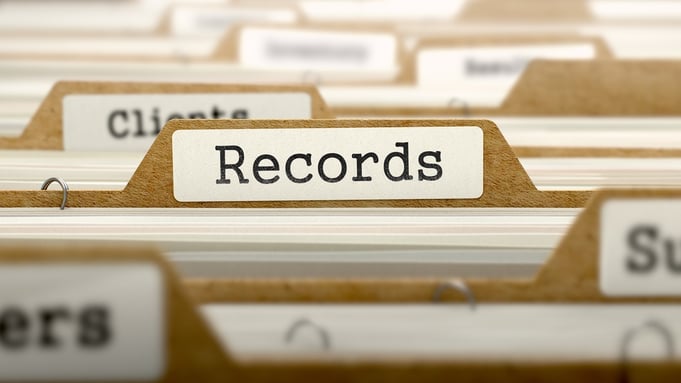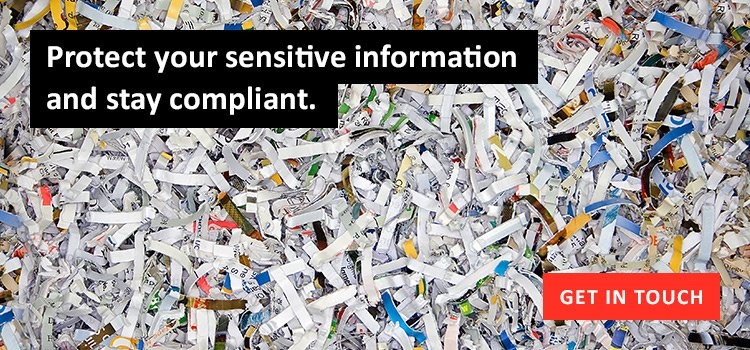5 Tips to Create a Retention Plan for Personal Documents
Sun, Nov 03, 2019
By: Jim Beran

Even if your finances and personal affairs are uncomplicated, you still have personal documents that you must retain for legal purposes. But you might not be clear about which documents you need to keep and how long you need to retain them.
At Gilmore Services, we understand that it can be difficult to manage your personal documents. What we recommend to our clients is creating a retention plan for personal documents. Here are 5 tips to help you create your retention plan.
#1: Gather Your Personal Documents
The first step is to gather your existing personal documents. That way, you’ll be able to catalog what you have and create an organized system for maintaining the items you need to keep.
You should gather:
- Personal tax returns and all supporting documentation, including 1099s and W-2s
- Pay stubs
- Canceled checks for tax deductions and charitable donations
- Bank and credit card statements
- All records related to investments, including purchase records, dividend records, and annual statements from mutual funds and retirement funds
- Home purchase documents
- Home improvement receipts and canceled checks
- Insurance documents
- Estate planning documents
- Warranties
- Marriage or divorce documents
Once you’ve gathered your important documents, you can move on to the next step.
#2: Identify the Documents You Need to Keep
You may find that you have some older documents that are no longer relevant. Here’s a breakdown of how long you need to keep your documents.
- Keep permanently: complex tax returns and supporting documentation, retirement annual reports, IRA annual reports, non-deductible IRA contributions, divorce documents, and estate planning documents.
- Keep for 7 years: simple tax returns, 1099s, W-2s, canceled checks supporting tax deductions, bank deposit slips, bank statements, documentation of charitable contributions, credit card statements, and receipts, diaries, and logs related to tax returns.
- Keep for the ownership period + 7 years: investment purchases and sales slips, dividend records, year-end brokerage statements, year-end mutual fund statements, investment property purchase documents, home purchase documents, home improvement receipts and canceled checks, and loan documents (term of loan + 7 years.)
- Keep for life of policy + 3 years: All insurance policies and contracts.
- Keep for length of warranty: home repair receipts and warranties, receipts and warranties for big-ticket purchases.
Sort your documents into piles before you move on to the next step.
#3: Dispose of Outdated Documents
After you’ve identified the documents you must keep, you should destroy the ones that are outdated and no longer relevant.
We strongly suggest that you partner with a professional document destruction company such as Gilmore Services. Home shredders can leave your documents vulnerable. The same is true of DIY data destruction.
#4: Organize Your Documents Chronologically
Once you have your documents sorted by how long you need to keep them, you should divide them up by type. For example, all tax documents should be kept together and so should all home repair or home improvement documents.
We recommend putting them in chronological order. In other words, you’d start with the oldest tax return you need to keep and work your way forward. You may want to use separate folders or color-coded tabs to keep track of everything.
#5: Create Your Document Destruction Schedule
It may be difficult to maintain a complex schedule for document destruction. Unless you have a huge number of personal documents, we suggest that you choose one day a year to go through your organized documents and pull out what’s ready to be destroyed.
We recommend using Tax Day, April 15th, as your document destruction day – or possibly the next day, the 16th. You’ll be accessing many of your documents at that time anyway. It will be easy to go through your documents, pull out anything that’s outdated or no longer relevant, and destroy it.
Conclusion
It’s extremely important to maintain and destroy your personal documents on a schedule. The 5 tips we’ve included here will help you organize, maintain, and destroy your personal documents in a way that’s safe and secure.
Need help organizing your personal documents? Click here to find out how we can help!
